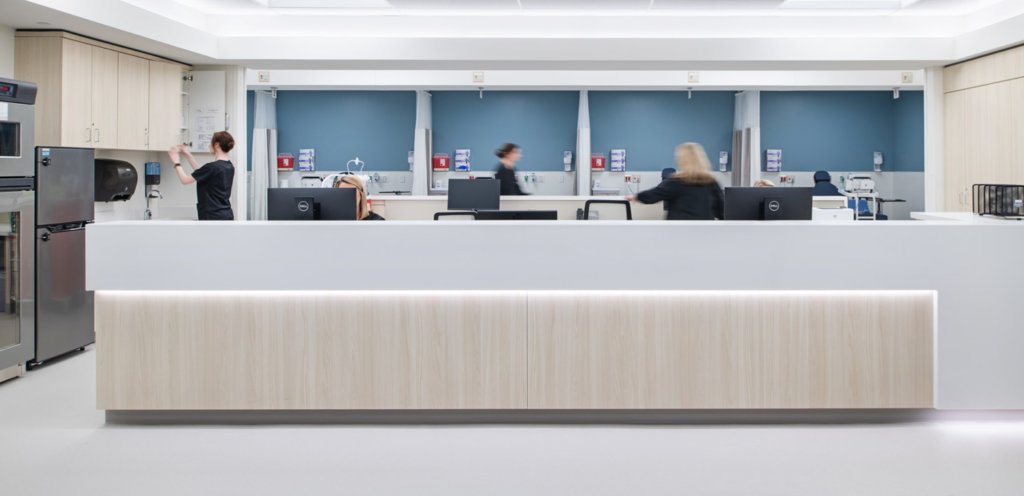Kansas City Surgery Center offers a wide range of ophthalmic surgical procedures: cataract surgery, glaucoma surgery, corneal transplants, and oculoplastics.

Cataract Surgery
The surgeons at Kansas City Surgery Center are bringing you the latest technology in cataract surgery, including state-of-the-art lasers and intraocular lens implants. When cataracts begin to limit your lifestyle and daily activities, then it is time to discuss your options with your surgeon. When your cataract is removed, it is replaced with an intraocular lens implant (IOL) that can reduce the need for glasses after surgery. Advances in technology have given patients many options when it comes to correcting vision during cataract surgery. Your surgeon will look at your measurements during your evaluation and determine a plan and options for you to choose from during your visit. Before visiting the surgery center, those options will be chosen by the patient and surgeon, and the surgical plan finalized.
Glaucoma Surgery
There are several treatments available for glaucoma: these include laser surgery, conventional surgery, and minimally invasive glaucoma surgery (MIGS). The goal during any glaucoma surgery is to reduce the intraocular pressure inside the eye to prevent or reduce damage to the optic nerve and prevent blindness. Some of these MIGS procedures can be done in conjunction with cataract surgery, while lasers and conventional surgery are done as separate procedures. Your surgeon will evaluate your glaucoma and determine which level of surgery is needed for you and your eye health.
Corneal Transplants
Corneal transplant surgery involves removing the damaged or diseased cornea from the eye and replacing with a healthy donated cornea. There are traditional full thickness transplants known as Penetrating Keratoplasty (PK), partial thickness Descemet’s Stripping (Automated) Endothelial Keratoplasty (DSEK/DSAEK), and the newer partial thickness Descemet Membrane Endothelial Keratoplasty (DMEK). Full thickness grafts are sewed into position during surgery. For all partial thickness transplants, an air bubble is inserted behind the cornea and you must lay flat on your back in a 180-degree plane for 24-48 hours. DSAEK and DMEK have a quicker recovery time than a PK, and the newer DMEK has a lower rate of rejection, smaller incision, and better potential vision after surgery. Depending on your condition and diagnosis, the surgeon will recommend the best treatment and surgical plan for you.
Oculoplastic – Cosmetic and Reconstructive Surgery
Plastic and reconstructive surgery (or eye plastic surgery) is known as oculoplastic surgery and involves the periorbital and facial tissues including eyelids and eyebrows, orbit (socket), and lacrimal (tear) system. These procedures typically include upper and lower eyelid lift (blepharoplasty), browlift, droopy eyelid repair (ptosis), turned-in (entropion) or turned-out (ectropion) eyelid, blocked tear duct, skin cancer reconstruction, orbital fracture repair, and loss or removal of the eye. Upon evaluation, the surgeon will determine your surgical plan and the insurance department at the surgeon’s clinic will advise you if the surgery is covered under your insurance plan or if it is a self-pay cosmetic procedure.
Other Procedures
Yag Capsulotomy – Sometimes after cataract surgery, the back of the IOL can become cloudy, called Posterior capsular opacification (PCO). If you notice your vision becoming cloudy after cataract surgery, please consult your surgeon for an evaluation. This is a separate procedure from cataract surgery and is a separate fee that is covered by your insurance.
Pterygium Removal – Due to sun exposure, you can have abnormal tissue grow across the sclera and cornea of the eye. It can be red and cause irritation and blurred vision. When it becomes too bothersome and interferes with your vision, the surgeon will remove it from the surface of your eye. Depending on the severity of the pterygium, a conjunctival autograft may be performed or amniotic membrane may be placed over the open area to promote healing.
